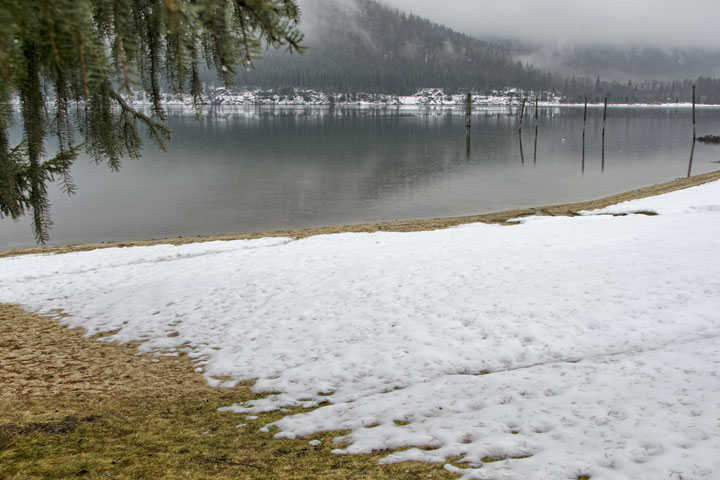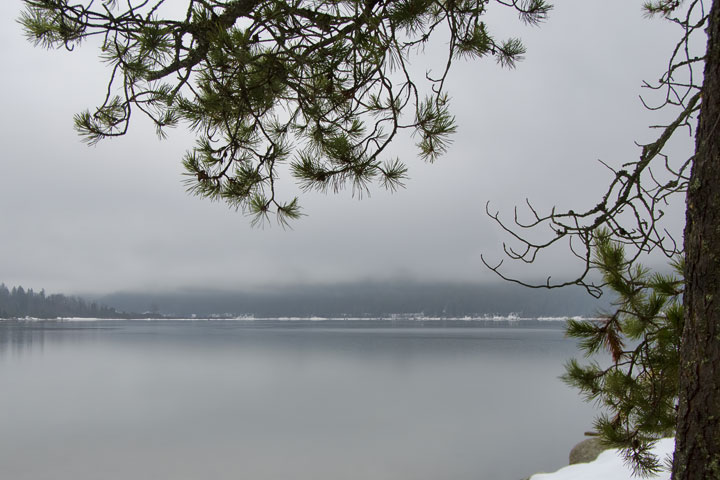A weather condition that results in the particularly rapid melting of snow is often referred to as a snow eater.
I explored the term, snow eater, on the Web and was disappointed by how many sites sloppily treated as if it were synonymous with the word, chinook. A chinook is merely one type of a snow eater. Nonsensically, one site even asserted that “chinook is an Indian word that means, snow-eater.” It does not: chinook comes from the name of a people and the wind was named after them.
The warm dry wind, known as a chinook in the foothills of the Rockies, is a well-known example of a snow eater. It causes both rapid evaporation and melting. Although similar winds occur in the lee of other mountain ranges (e.g., the föhn in the Alps), such winds are regional.
There are other snow eaters with a geographically broader effectiveness: rain and fog. It has long been observed that snow vanishes rapidly in response to rain. It was once assumed that this resulted from the rain drops having a higher temperature and so warming the snow it fell upon. But, fog can be even more effective in melting the snow and there is minimal settling of fog drops.
It turns out that the primary reason rain and fog do this is that each is accompanied by a high humidity. It is the water vapour condensing on snow that does the melting rather than the water drops falling upon it. The high latent heat of condensation does the melting.
The way a patch of snow vanishes depends upon what is doing the melting. Sunshine usually melts the snow around its edges. The Sun warms bare ground which warms the adjacent snow with the result that the snow shrinks from the edges toward the centre. A warm wind or the condensation associated with rain or fog melts snow over its entire surface and this causes the snow patch to become thinner.
This morning brought drizzle (a fine rain) and the uneven snow on this beach thinned quickly to reveal little pits.

Water vapour doesn’t only condense upon the snow, but on any colder surface; the lake is such a cold surface. Water condensing on water does not lead to a change in the appearance of the Lake, itself, but it does change the appearance of the air. The downward flux of the vapour dries the lower air leaving the fog (now a cloud) hanging above the surface.


Well said, Alistair, thank you once again.
More fascinating information, Alistair. You are an incredible teacher and mentor!